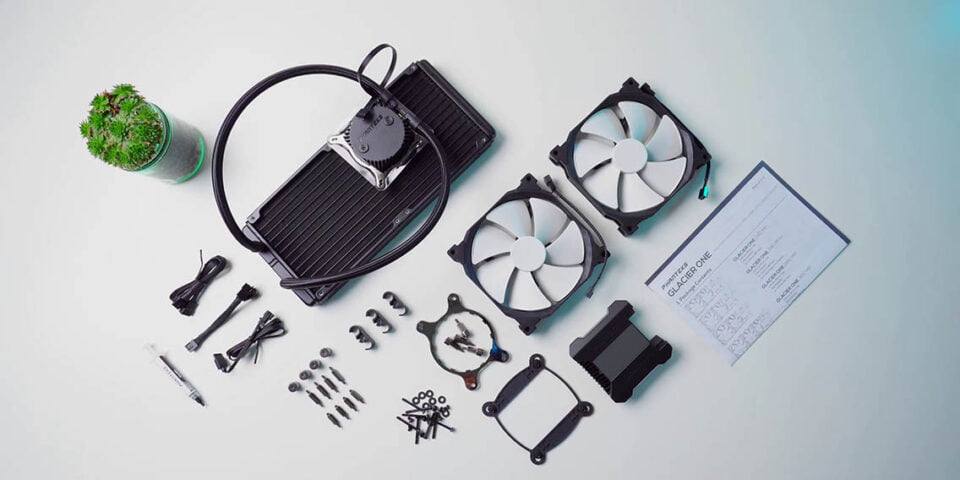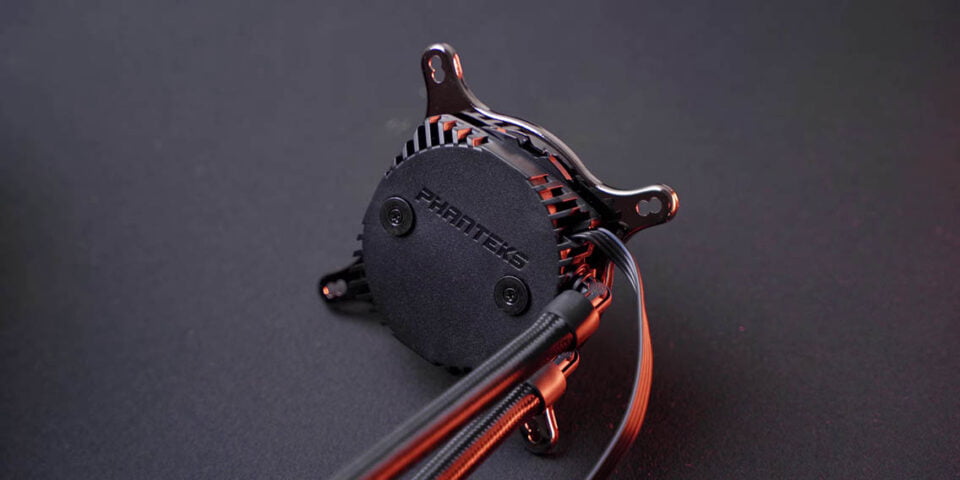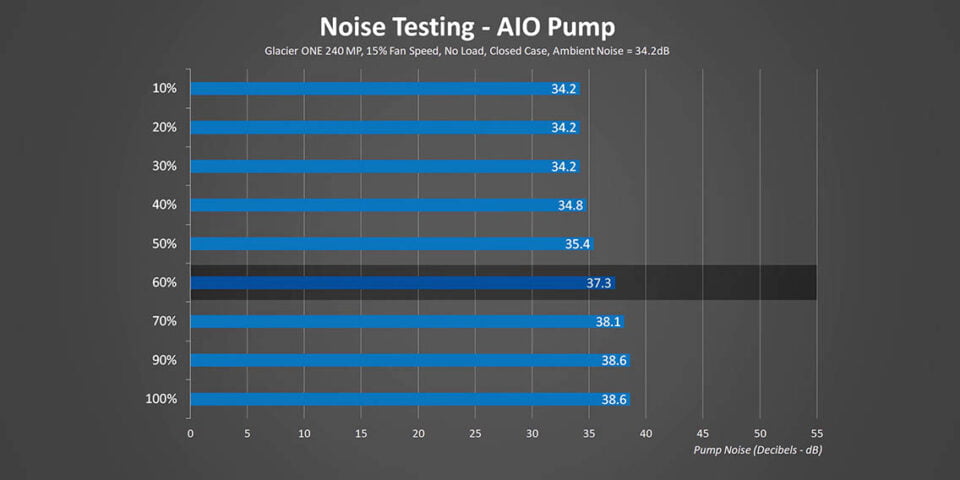How to Choose The BEST AIO Cooler for your Gaming PC

Share:
Table of contents
In this article we will be answering one simple question that required a lot of precise testing, and the question is : Exactly what type of cooling performance can you expect from different sized all-in-one coolers (120mm/240mm/280mm/360mm) when we standardize for noise and heat loads. Those two last parts are the important bit because running the coolers at 100% doesn’t give you apples to apples comparison. This was fun to do and it was actually something a lot of you have been asking for.
In the last 12 months or so we have been revamping and evolving our testing methodologies for monitors, notebooks, and air coolers. For example, in our most recent heatsink review – which you can check out here – we took some steps to deliver noise normalized results, across different decibel readings, and also at different heat loads. All of that led us to this article. We will be stepping back into doing more all-in-one cooler content soon, and also keep developing methodologies that we want to implement and roll out moving forward in order to do real apples to apples comparisons when we take into account noise and different heat loads.
Phanteks Glacier One MP AIO Lineup
I have to thank Phanteks for making this article possible since they sent over their entire range of new Glacier One MP all-in-one coolers. They all use Asetek’s brand new Gen 7 pump design that you will start seeing a lot more in other products over the next year. This will allow us to test identically equipped products, because we have the entire range of the Asetek pump design and the same fans from Phanteks, therefore eliminating any variables but the size of the radiator itself. This gives us a good baseline for future watercooling reviews. If you want to see anything different or slightly revised in the future definitely let us know.
Models & Prices
In short, we will go over the new Glacier One MP series, talk about its design, and then do a deep dive into its cooling performance at different sizes and at different heat loads. This should be fun, so let’s begin right away. The entire Glacier One MP lineup is available in 240, 280, and 360 variants, featuring an all-black design with white blades on the fans. We also have this full white version of the 240mm all-in-one cooler with white fans, white radiator, white tubes, plus a couple of Halo fan frames to bring a lot more bling to the D-RGB space. We will also be using an Asetek Gen 7 120mm all-in-one cooler for testing since Phanteks is not offering a 120mm version yet, but it is equipped with the same fan as the other coulers. By the way, they all use 27mm thick aluminium radiators. As for prices they have a range from $125 USD to $170 USD, with the all-white MPH model featuring a bit of price premium just because of the bling.
The Pump
Some standout features include the low-profile Infinity Mirror cap design, which is magnetic and super easy to attach to the pump, and it also cuts down on the pump noise since it has sound dampening material at the base. Also my goodness does it look good, the colour is vibrant and beautifully uniform below the tempered glass window. The Phanteks logos would accommodate an upside down orientation as well. It connects to a 5V addressable header on your motherboard or into a Phanteks lighting hub/enclosure.
The Fans
Believe it or not this is one of the few all-in-one coolers where the tubes exiting the pump do not interfere with my memory, they are not slightly pushing against the memory module thanks to the new rotary fittings. The tubes are 400mm in length and are pretty flexible with sleeved and braided exterior. Each cooler comes with three tube clips that help to collect and clean up the look of the tubes inside your case.
All of the fans are PWM with high static pressure blade design thanks to high speeds of 2,000 RPM on the 120mm and 2,200RPM on the 240mm fans. They all have double-sided rubber dampeners. My favorite part is the daisy chain cable design, letting you connect all the fans into one fan header on the motherboard with a 500mm extension included.
Methodology
Finally, the installation should be familiar to most if you have ever used an all-in-one cooler before, because it’s the standard Asetek patented design that is compatible with both AMD and Intel via an easy bracket swap. It has pre-applied thermal compound at the base, but good on Phanteks for including a tube of thermal paste for future use. Now it is advised to connect the pump PWM cable into a separate fan or AIO header on the motherboard. but if you only have the one available you can use a splitter cable to connect both the fans and the pump into a single header.
Now let’s talk performance, the test system is the same one we have used for air cooling reviews with an enclosed case and an Intel Core i9-10980XE that is being set to constant wattage levels of 120W, 165W, and 260W. This allows us to test a variety of thermal loads representing stock, overclocked, and really high wattage CPUs. For each of these all-in-one coolers the tests were run for 25 minutes at full load just so the liquid inside the all-in-one cooler could normalize, then we have the 25 minutes cool down with fans at 100% so we could normalize things back to default. One quick thing to mention about acoustical performance for all-in-one coolers is that when we are talking about air cooling with heatsinks it’s pretty straightforward since all you have to worry about is the fan noise. but with all-in-one coolers you have to worry about the pump as well and maybe giving it a break in period of a few hours or even several days so that the bubbles inside the system could disperse throughout the system. Only then can the normalized acoustic testing be done.
Either way, this Asetek Gen 7 pump is one of the quietest we have seen so far, and in our testing room the noise floor is a constant 34 dB, so if the pump is below that it will not be picked up by our meter. Even with the fans at their 15% minimum safe speed the pump noise only has a small impact on the acoustical results up until it reaches the 60% mark. After that point the noise footprint does start to increase, but what does that mean for temperatures?
Performance Results
Let’s set the fan speed on each of these coolers to 100% and hit them with a constant 260W of heat to see if pump speed has any effect. These results actually had us all really surprised, but let me explain what is going on. It looks like the Asetek Gen 7 pump is efficient enough to properly feed the 120mm, 240mm and 280mm radiators with enough liquid flow for optimal cooling at just 50% speed. Increasing pump speed beyond that doesn’t really help with temperatures. The only small exception is with a 360mm radiator, where at 50% it still seems to be that optimal flow rate to balance noise and efficiency, but there are some tiny and almost insignificant improvements beyond that. Based on that information we will run the pump speed at 50%.
For our 120W test, this is meant to show performance on almost all current Intel and AMD CPUs. Sure there is gonna be some outliers like the Core i9-10900K and even some Ryzen 7 5800X chips that seem to run really hot, but this should still cover the vast majority of users here. With the 120mm and 240mm coolers you can see that at most they are separated by just 4°C across the entire noise range. Even when running at maximum speed the single fan radiator only hit 44 dB, while the dual fan design did offer a bit more performance, but it hit a much higher noise level. Jumping up to a larger size, the 360mm and 280mm all-in-one coolers really don’t give any additional performance benefits versus the 240mm. Even against the smaller 120mm version, we are looking at the maximum delta of just 6°C. You also notice the Glacier 280mm line extends a bit further towards the 50 dB, and that is because its fans are actually a lot louder at full speed than the 120mm fans.
All this goes to show you three things: Number 1 is running fans at much higher RPM and even at 100% has diminishing returns. Number 2 even a good 120mm all-in-one cooler can give you amazing performance at low noise levels. And number 3 while a 280mm or 360mm all-in-one cooler might look amazing inside your system, they are kind of waste of money from a performance-per-dollar standpoint at 120W. However, what if we dial up the wattage?
We are starting to see a bit more separation between the 120mm and 240mm designs while running at the same decibel levels, but don’t let that fool you there is still only 6°C at most separating these two coolers. Personally, I think that points towards how good the new Asetek design is since the 120mm AIO only hit a maximum of 68°C at a super low 35 dB. Adding the larger AIOs doesn’t really show anything different from the 120mm results since none of their dual fan radiators are anywhere near their thermal limit. Basically that leads to pretty comparable performance between all of them, and we are seeing diminishing returns above a certain fan speed. So far these results have been a little bit uneventful to be honest, but let’s separate the boys from the men and step up that wattage limit to 260W. That level is not really representative of everything that is out there, but an overclocked i9-10900K or the i9-10980XE can certainly come close to that heat load.
And now we are finally starting to see where something like the Glacier One 240mm can start to stretch its legs while the 120mm version gets overwhelmed regardless of how fast its fan runs. The Glacier One 280mm also starts to pull ahead, at least until its louder fans start getting in the way, which ends up equalizing results with the smaller dual fan radiator. It does have an extra gear though and maxes out at just 74°C. I have to point out that Glacier One 360mm is a cooling beast with temperatures that are good 5°C cooler than the 240mm at an equal 38 dB. That is pretty amazing, but also remember it is a good $45 USD more expensive too.
If all of these data points are a bit too much to consume, I have also broken them out at the normalized mid-level noise of 38 dB. These results are a bit easier to see, but with the graph starting at the scale of zero this also emphasizes just how little difference there is between the different sizes until you get some pretty insane heat loads.
Conclusion
I think it’s time to wrap things up. First of all, you can’t assume these results will apply to the entire all-in-one cooler space because even though they might be using the same Asetek design and pump, they might have different fans and so the temperatures might not really equalize across all the different sizes. However, this has been a really good way to test out what Phanteks is offering across the entire range. We were really impressed with how well the 120mm all-in-one cooler performs, and this is something that I was totally not expecting. Even if you’re overclocking a 240mm AIO will be totally sufficient, and if you are going with a slightly larger size then you are going to be bumping into the laws of diminishing returns unless you are on those few people who has a really power hungry CPU that can go at constant 200W+ like a high core count Ryzen ThreadRipper CPU.
Either way, I hope this article gave you a bit more confidence in choosing a slightly smaller and lower price all-in-one cooler. Bigger doesn’t necessarily mean better in all scenarios, especially when you are talking about slightly lower wattage CPUs and I think that makes total sense. What I’m excited about is have this article as a kickoff for more watercooling and all-in-one cooler content and just cooler content in general, so that we can compare everything and see which coolers are best at certain decibels and certain heat loads.


































































